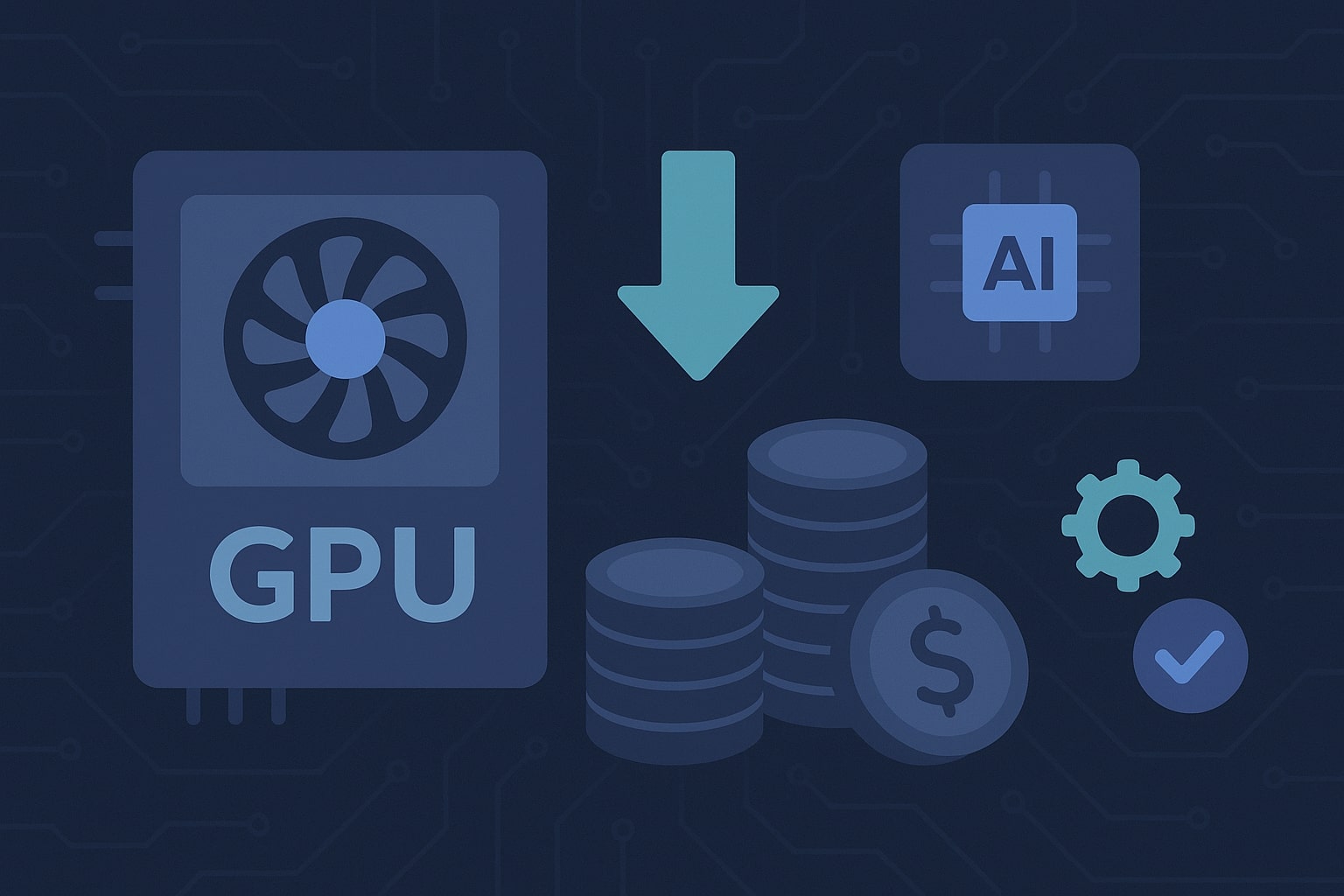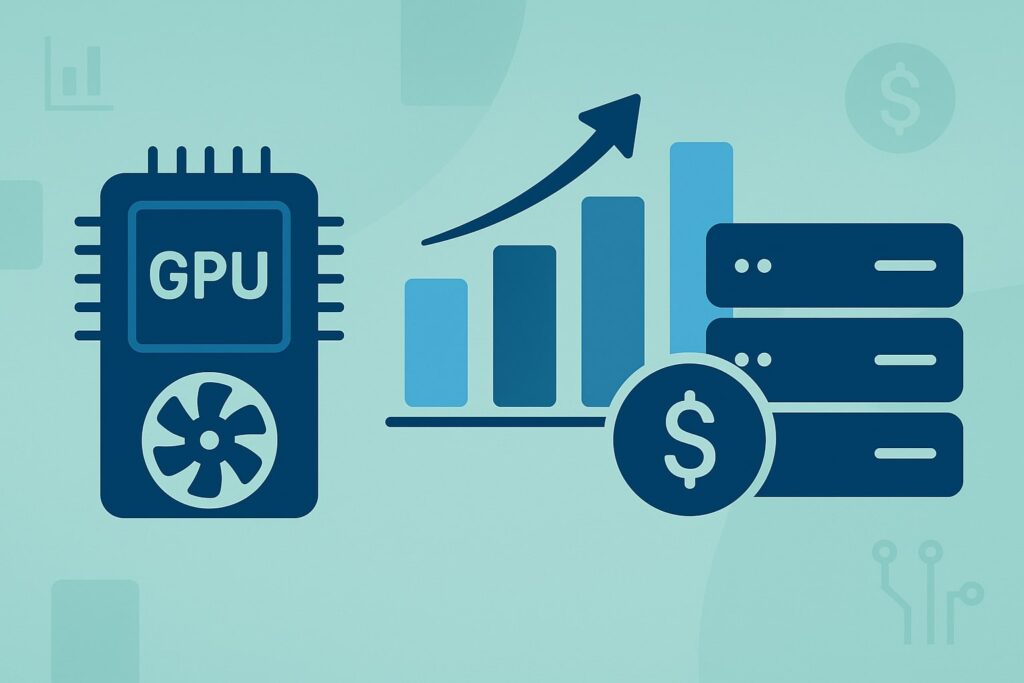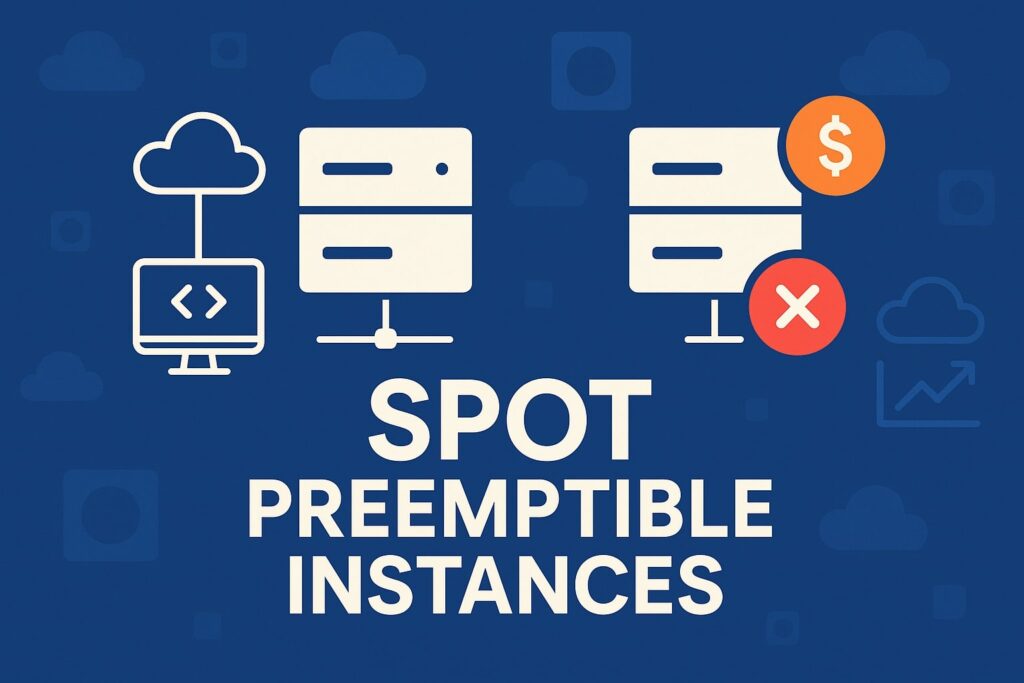
By hostmyai September 29, 2025
Running AI workloads—whether for training deep learning models, fine-tuning large language models, or deploying inference at scale—can quickly become expensive due to GPU instance costs.
Graphics Processing Units (GPUs) are powerful accelerators, but they demand high hourly rates on cloud platforms like AWS, Google Cloud, and Azure. For startups, research teams, and even enterprises, finding ways to reduce GPU instance costs is critical for sustainability and growth.
In this guide, we’ll cover actionable strategies, best practices, and hidden optimizations that can help organizations cut GPU bills without compromising performance.
Understanding the Economics of GPU Instances

The first step toward reducing costs is understanding how GPU instances are priced and where money is often wasted. GPU costs are influenced by hardware type, cloud provider pricing models, data transfer charges, and usage inefficiencies.
For instance, an NVIDIA A100 instance can cost between $2 to $4 per hour on cloud providers, but prices can skyrocket for on-demand rates in high-demand regions. When workloads are not optimized, idle GPUs, overprovisioning, and poor scheduling often waste thousands of dollars.
One major cost driver is the pricing tier. On-demand instances are the most expensive, offering flexibility but no discounts. Reserved or committed-use contracts can cut costs by 30–60%, while spot/preemptible instances slash costs up to 80% but come with the risk of interruptions.
Another overlooked factor is regional pricing variance: running workloads in certain cloud regions can be 20–40% cheaper. Beyond that, data egress charges for transferring large model checkpoints or datasets outside the cloud can compound costs.
The economics of GPU usage also tie into workload type. Training large-scale models consumes hundreds or thousands of GPU hours, while inference might require fewer GPUs but at a steady 24/7 cadence.
Recognizing whether your workload is bursty (train-and-finish) or continuous (production inference) helps determine the right cost-optimization strategies. For example, inference pipelines may benefit from autoscaling and GPU sharing, whereas training tasks might benefit from spot instance utilization.
Lastly, there’s the factor of GPU utilization. A GPU that runs at only 20% capacity is wasted money. Many teams unknowingly pay full rates while their models underutilize GPU cores or memory.
Understanding utilization metrics through profiling tools is essential to aligning hardware with workload demands. Once you grasp these cost levers, the strategies to reduce GPU expenses become clearer.
Optimizing Workload Scheduling and Utilization

One of the most overlooked but highly effective ways to reduce GPU costs is workload scheduling and utilization optimization. At a basic level, the principle is simple: ensure GPUs are being used efficiently and never sit idle.
However, in practice, many organizations struggle with mismanagement of time and resources. A model training job might start on a Friday and run over the weekend, consuming costly on-demand GPU hours without anyone monitoring progress. Such scenarios often lead to unnecessary cloud bills.
The first tactic is using scheduling tools. Kubernetes with GPU support, Slurm clusters, or cloud-native job schedulers can be configured to start and stop GPU jobs only when resources are required.
By setting timeouts and automatic termination policies, you can ensure jobs that hang or exceed runtime limits don’t consume GPU cycles indefinitely. Cloud platforms also offer budget alerts and automated shutdown scripts that help control runaway costs.
Another approach is batch scheduling. Instead of training multiple small jobs on separate GPU instances, teams can bundle them into one job on a single multi-GPU node, maximizing hardware utilization.
Profiling your models can reveal whether workloads are compute-bound or memory-bound. For compute-light but memory-heavy jobs, smaller GPUs with large memory may suffice. Conversely, for compute-intensive training, it might be more cost-effective to run fewer jobs on a high-end GPU than on lower-tier cards.
GPU sharing is another strategy. With tools like NVIDIA Multi-Instance GPU (MIG), a single GPU can be partitioned into multiple smaller logical GPUs.
This is especially effective for inference workloads where each request does not require the full power of a GPU. Sharing GPUs reduces idle capacity and allows multiple models to run concurrently on the same hardware.
Monitoring is equally vital. Tools like NVIDIA’s Nsight Systems, Prometheus with DCGM exporter, or cloud provider dashboards can give insights into utilization metrics.
If utilization is consistently low, it may signal that you should downsize to smaller GPUs or reduce the number of GPUs per job. Combining monitoring with intelligent scheduling creates a feedback loop where you continuously match workload requirements with the most cost-effective GPU setup.
Leveraging Spot and Preemptible Instances

One of the fastest ways to cut GPU bills is by leveraging spot (AWS) or preemptible (Google Cloud) instances. These discounted offerings can reduce hourly rates by 70–90% compared to on-demand pricing.
The trade-off is that these instances can be interrupted at any time when demand rises, but with careful planning, they can be an invaluable cost-saving tool for AI workloads.
Training workloads, particularly large-scale deep learning jobs, can often tolerate interruptions if checkpointing is implemented. Modern frameworks like PyTorch Lightning or TensorFlow include built-in checkpointing that allows models to resume training from the last saved state.
By configuring jobs to save progress periodically, even if a spot instance is terminated, training can continue later without restarting from scratch. This checkpointing approach ensures that cost savings outweigh the occasional inconvenience of interruptions.
Another technique is building fault-tolerant pipelines. Workload managers like Ray, Horovod, or Kubernetes can distribute training across multiple spot instances. If one instance is reclaimed, the system redistributes tasks automatically, minimizing downtime.
Some providers even allow combining spot and on-demand instances in a hybrid cluster, where on-demand GPUs act as “anchors” while spot instances provide scalable capacity at low cost.
For inference workloads, using spot instances can be riskier since service uptime is critical. However, it’s possible to run non-critical inference (such as batch predictions or background jobs) on spot GPUs, while real-time inference runs on stable on-demand or reserved GPUs.
This hybrid strategy ensures that mission-critical tasks aren’t disrupted while still cutting costs on lower-priority tasks.
To maximize savings, organizations can use tools like AWS EC2 Fleet, Google Cloud Recommender, or third-party platforms like Spot.io to automate bidding and provisioning of spot GPUs.
By diversifying across regions and GPU types, you can reduce the likelihood of simultaneous interruptions. Over time, organizations that strategically adopt spot instances can cut GPU spending dramatically while maintaining operational reliability.
Choosing the Right Hardware and Instance Type

Not every workload needs the latest and most expensive GPUs like NVIDIA A100 or H100. One of the simplest but most impactful ways to reduce GPU costs is matching the right hardware to your specific AI workload.
Many teams fall into the trap of overprovisioning, running relatively lightweight models on cutting-edge GPUs that are far more powerful than necessary.
For inference tasks involving computer vision or smaller NLP models, mid-tier GPUs like NVIDIA T4 or L4 often provide excellent performance at a fraction of the cost. For training small to medium-sized models, V100 or A10G GPUs can deliver good throughput without the premium costs of A100s.
Teams should benchmark their models across different GPU types to identify the price-performance sweet spot rather than defaulting to the newest hardware.
Instance configuration also plays a role. Cloud providers often bundle GPUs with CPU and memory resources, but mismatches can cause waste.
For example, a job that is GPU-intensive but requires little CPU may be overpaying for unnecessary CPU cores. In such cases, choosing GPU-optimized instance families instead of general-purpose instances leads to better cost alignment.
Another consideration is multi-GPU scaling. While distributing training across many GPUs reduces runtime, it can also drive up total costs if scaling efficiency is poor.
If doubling the number of GPUs doesn’t halve the training time, you may be paying extra without proportional performance gains. Profiling scaling efficiency helps decide the optimal number of GPUs to use for each workload.
Finally, alternatives like cloud TPUs (Google Cloud) or specialized accelerators like AWS Inferentia may provide lower-cost options for specific use cases. While they require some adaptation of models and code, the cost benefits for large-scale inference can be significant.
Ultimately, cost reduction starts with resisting the instinct to always choose the top-tier GPU and instead aligning instance type with real workload requirements.
Data Management and Storage Optimization
GPU costs are not just about computers. Data management inefficiencies often amplify expenses, especially for AI workloads involving massive datasets.
Poorly managed data pipelines can lead to excessive data transfer fees, long GPU idle times while waiting for I/O, and redundant storage costs. Addressing these issues is critical for lowering the overall GPU spend.
A common problem is training jobs that fetch data from remote storage inefficiently. If GPUs sit idle while waiting for slow I/O operations, you’re effectively paying for wasted time.
Solutions include caching datasets locally on instance-attached storage or using high-throughput storage solutions like AWS FSx for Lustre. Preprocessing and cleaning data before loading it into GPU pipelines also reduces wasted cycles.
Data locality is another cost lever. Transferring datasets across regions or out of a cloud provider incurs high data egress charges.
By keeping training data in the same region as GPU instances, you minimize these hidden costs. Some organizations also adopt hybrid strategies, where frequently accessed datasets are cached on cheaper object storage, while archival data remains in cold storage until needed.
Compression and efficient data formats can also help. Switching from CSV to Parquet, or using TFRecords for TensorFlow, reduces I/O overhead and speeds up training, indirectly lowering GPU runtime. Similarly, deduplication of datasets prevents unnecessary storage of repeated files that bloat costs.
Finally, adopting data versioning and governance tools like DVC or MLflow ensures that only necessary versions of datasets are stored and used. Without these practices, teams often duplicate massive datasets across multiple buckets, incurring unnecessary storage fees.
Proper data management ensures GPUs spend their time on actual compute rather than waiting on inefficient data pipelines, saving both compute and storage expenses.
FAQs
Q.1: Why are GPU instances so expensive for AI workloads?
Answer: GPU instances are costly because they bundle cutting-edge hardware, specialized drivers, and high-performance networking into on-demand services. The demand for GPUs from both AI and non-AI industries (like gaming, rendering, and scientific simulations) creates scarcity, driving prices up.
Cloud providers also charge premiums for flexibility—on-demand instances carry higher costs compared to reserved or spot instances. Moreover, AI workloads typically require long-running jobs that amplify these expenses over time.
Another hidden factor is the ecosystem around GPUs. Beyond raw compute, there are storage and data transfer costs, software licensing fees, and operational overhead for managing distributed training or inference pipelines.
This combination of hardware scarcity, bundled services, and long runtimes makes GPU instances one of the largest expenses for AI-driven organizations.
Q.2: How can small startups afford GPU compute without breaking their budget?
Answer: For startups, the key is balancing flexibility with cost-efficiency. Spot or preemptible instances are often the best entry point, as they allow access to powerful GPUs at a fraction of the cost.
By designing training pipelines with checkpointing and fault tolerance, startups can mitigate the risks of interruptions while still reaping the benefits of cost savings. Additionally, many cloud providers offer startup credits or research grants that can significantly reduce early-stage costs.
Startups should also avoid overprovisioning. Instead of renting A100 GPUs for every workload, they should benchmark smaller GPUs like T4, V100, or A10G, which may be more than sufficient.
Another smart strategy is leveraging GPU-sharing services or community clusters where multiple organizations pool resources. This allows startups to run production-grade models without committing to the overhead of dedicated high-end hardware.
By combining these strategies with disciplined monitoring and budgeting, startups can scale AI development affordably.
Conclusion
Reducing GPU costs for AI workloads is not about a single magic trick but a layered strategy. It involves understanding the economics of cloud pricing, optimizing workload scheduling, leveraging discounted instance types, aligning hardware with workload needs, and streamlining data management.
Whether you are a startup training your first models or an enterprise deploying AI at scale, the principles remain the same: maximize utilization, minimize waste, and embrace flexibility where possible.
With the rapid growth of AI, demand for GPUs will continue to rise, but organizations that implement smart cost-optimization practices will maintain a competitive edge.
By adopting the strategies outlined in this guide—spot instances, efficient scheduling, hardware benchmarking, and better data management—you can transform GPU expenses from a painful bottleneck into a manageable investment that fuels innovation.